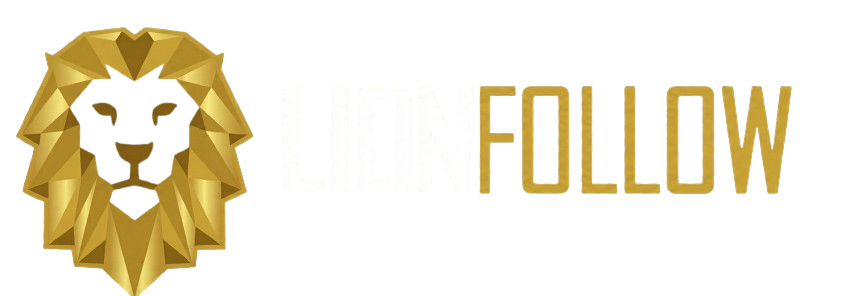LinkedInカルーセルの力を理解する
LinkedInカルーセルは、急速なトラフィックとエンゲージメントを促進するために最も活用されていないコンテンツフォーマットの一つです。フィードに埋もれてしまう静的投稿とは異なり、カルーセル文書はユーザーがコンテンツをスワイプし続けるインタラクティブな体験を創り出します。このフォーマットが持つ自然な停止力と、LinkedInのアルゴリズムがネイティブ文書のアップロードを優先することにより、バイラル化の可能性が最大限に高まります。カルーセル作成をマスターすれば、単にコンテンツを投稿するだけでなく、スクロールする人々を熱心なフォロワーやウェブサイト訪問者に変える魅力的な体験を創り出せるのです。
カルーセルの成功の背後にある心理学的原則は、ツァイガルニク効果(未完の課題をよりよく記憶する現象)にあります。ユーザーがカルーセルをスワイプし始めると、最後まで完了させたいという衝動に駆られ、エンゲージメント時間が劇的に増加します。この長い滞在時間は、LinkedInのアルゴリズムにコンテンツの価値を伝え、より大きなオーガニックリーチをもたらします。権威を確立したい企業やクリエイターにとって、カルーセルは複雑な情報を消化しやすく、スワイプ可能な形でプロフェッショナルなオーディエンスに響かせる完璧な枠組みを提供します。
たまらないカルーセルコンテンツのフックを作成する
最初のカルーセルスライドが、ユーザーがエンゲージするかスクロールして去るかを決定します。最も効果的なフックは、オーディエンスの課題を即座に捉え、明確な価値を約束します。一般的なタイトルの代わりに、読者が求める結果に直接語りかける利益主導の見出しを使用しましょう。「コンバージョン率を300%向上させた5つのフレームワーク変更」は、「マーケティング戦略」よりもはるかに優れた成果を発揮します。なぜなら、方法と結果の両方を具体的に示しているからです。
変換率の高い実証済みフックの公式
いくつかのフック構造は、一貫して高いエンゲージメント率を促進します。「過ちの暴露」フックは、オーディエンスが犯す一般的な誤りを明かします:「47件の見込み客を失ったLinkedInアウトリーチの失敗」。 「数値化された結果」フックは具体的な成果を提供します:「LinkedInから週に15件以上の見込み客を生み出す7つのステップ」。 「反対の視点」フックは通説に挑戦します:「なぜあなたのコンテンツ戦略は理想的な顧客を遠ざけているのか」。さまざまなフックスタイルをテストし、あなたの特定のオーディエンスに最も響くものを見つけ出しましょう。
スクロールを止めるビジュアルカルーセルのデザイン
ビジュアルの魅力が、凡庸なカルーセルとバイラルなカルーセルを分けます。LinkedInのインターフェースはカルーセルを文書プレビューとして表示するため、最初のスライドはクリックを獲得するのに十分な視覚的魅力がなければなりません。フィードで目立ちながらも圧倒的ではない、ブランドに一貫した大胆な色を使用しましょう。濃い青の背景に白い文字のような高コントラストの組み合わせは、読みやすさの点で通常良い成果を上げます。LinkedInのエンゲージメントの60%以上がモバイルで行われるため、テキストがモバイルデバイスで読める十分な大きさであることを確認してください—これは絶対条件です。
最大のインパクトのためのスライド構造の最適化
各カルーセルスライドは、一貫した視覚的階層に従うべきです。スワイプ遷移中に表示され続ける上部に最も重要なメッセージを配置します。認知負荷を防ぐために、スライドごとに一つの核心的なアイデアを使用します。コンテンツを自然に視線が導かれるように、十分な余白を組み込みます。データの多いスライドでは、統計を視覚的に魅力的なチャートや特大の数字に変換し、即座に価値を伝えましょう。Lionfollowのデザイン最適化サービスは、視覚的一貫性を保ちながらエンゲージメントを最大化する、プロフェッショナルにデザインされたカルーセルテンプレートの作成をお手伝いします。
高い完了率のための戦略的なコンテンツの順序付け
カルーセルスライドの順序は、完了率に大きな影響を与えます。コンテンツを勢いを構築するように構成し、最も強力な洞察から始め、実践的な要点を後のスライドに残します。読者を引き付けるために、最も驚くべきまたは直観に反する点を早い段階に配置し、中間のスライドで裏付けとなる証拠と文脈を提供します。最後のスライドは、約束された変革を提供するとともに、自然にあなたの呼びかけ(CTA)へと導くべきです。
最も弱いコンテンツを中間に配置するという一般的な過ちを避けましょう—ここで離脱率がピークに達します。代わりに、最も実用的で即座に適用可能なアドバイスを4〜6枚目のスライドあたりに挿入し、重要な中間セクションを通じてエンゲージメントを維持します。各スライドは論理的に次のスライドへと流れ、ユーザーが次に何が来るかを発見するためにスワイプを続けたくなるような物語の弧を創り出します。
戦略的な呼びかけ(CTA)でトラフィックを促進する
カルーセルの最終スライドは、トラフィックを促進するための最も価値のある領域です。一般的な「もっとヒントを得るためにフォローしてください」ではなく、ユーザーを望むアクションへと導く具体的で魅力的なCTAを作成しましょう。最も効果的なカルーセルCTAは、クリックと引き換えに追加の価値を提供します:「無料のLinkedInカルーセルテンプレートキットをダウンロード」または「正確な実装ステップを含む完全なケーススタディを読む」。
多点CTA戦略
カルーセル全体に複数のCTAを組み込むことで、トラフィックの可能性を最大化します。キャプションにコメントを促す控えめで邪魔にならないCTAを含め、3枚目のスライドにエンゲージメントを高める(アルゴリズムにより多くのエンゲージメントを信号する)魅力的な質問を追加し、主要なトラフィック促進CTAを最終スライドに配置します。この多点アプローチは、異なるエンゲージメントレベルのユーザーを捉えながら、カルーセルの可視性を向上させる全体的なインタラクション率を高めます。
カルーセルのリーチを拡大する
卓越したカルーセルを作成することは戦いの半分に過ぎません—戦略的な配信が、それがバイラル可能性に達するかどうかを決定します。ターゲットオーディエンスが最も活動的な時間、通常は彼らのタイムゾーンで火曜日から木曜日の午前9時から11時に、カルーセルの公開をスケジュールします。公開後すぐに、最初の1時間以内にコメントに対応し、あなたのコンテンツが会話を生み出していることをLinkedInのアルゴリズムに信号を送ります。
Lionfollowのエンゲージメント向上サービスは、あなたのカルーセルをより広範な配信に押し上げるために必要な初期の勢いを提供できます。戦略的な公開とターゲットを絞ったエンゲージメントを組み合わせることで、LinkedInがあなたのコンテンツを価値あるものと認識し、より多くのユーザーに有機的に表示する完璧な条件を作り出します。適切なLinkedInグループでカルーセルを共有し、個々のスライドをスタンドアロンの投稿として再利用して、完全なカルーセルへの追加トラフィックを促進することを検討してください。
パフォーマンスの測定と将来のカルーセルの最適化
主要な指標を追跡することで、カルーセル戦略の継続的な改善が可能になります。完了率(すべてのスライドをスワイプした視聴者の割合)、エンゲージメント率(いいね、コメント、シェア)、および最終CTAのクリック率に焦点を当てましょう。LinkedInのネイティブ分析はこれらの洞察を提供し、どのカルーセルトピック、デザイン、CTAがあなたのオーディエンスに最も響くかを特定することを可能にします。
さまざまなカルーセル変数(フックスタイル、スライド数、主要CTA、公開タイミング)にわたるパフォーマンスを文書化するための簡単な追跡スプレッドシートを作成します。時間の経過とともに、どのアプローチが最高のトラフィックとエンゲージメントを生み出すかを示すパターンが現れます。このデータ駆動型アプローチは、カルーセル作成を推測から、あなたのウェブサイトやオファーへ一貫したトラフィックを促進する繰り返し可能なシステムへと変えます。
結論
LinkedInカルーセルをマスターするには、説得力のあるコンテンツと戦略的なデザインおよび配信を組み合わせる必要があります。これらの実証済みフレームワーク—たまらないフックの作成からスクロールを止めるビジュアルのデザイン、戦略的なCTAまで—を実装することで、あなたのLinkedInプレゼンスを一貫したトラフィックドライバーに変えることができます。プラットフォームのアルゴリズムは、高いエンゲージメントと完了率を生み出すカルーセルコンテンツを積極的に報酬し、可視性のための前例のない機会を創り出します。LinkedInの成長を加速させる準備はできていますか?Lionfollowの専門サービスを探索して、あなたのカルーセルパフォーマンスを増幅させ、戦略的なソーシャルメディアマーケティングを通じて測定可能なビジネス結果を促進しましょう。

